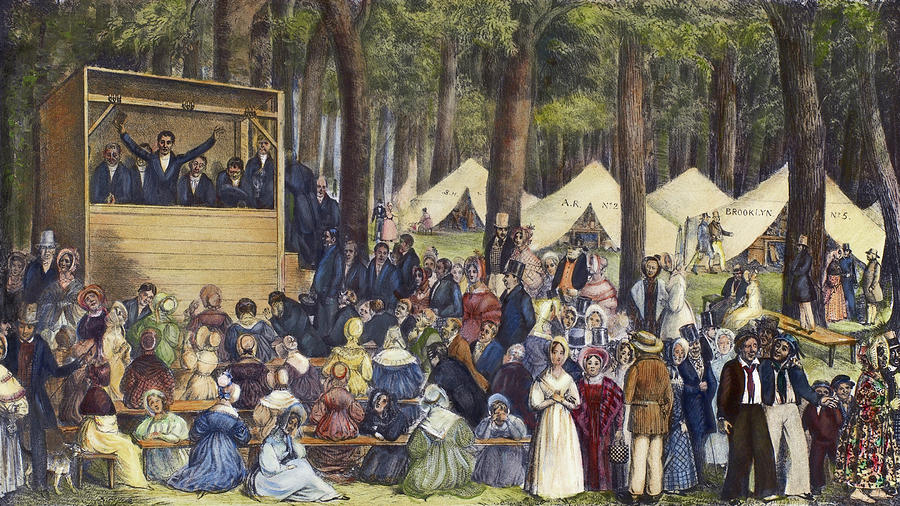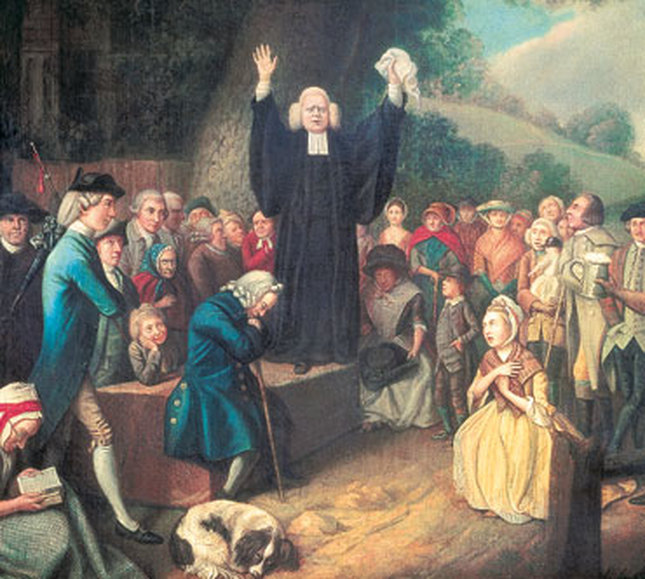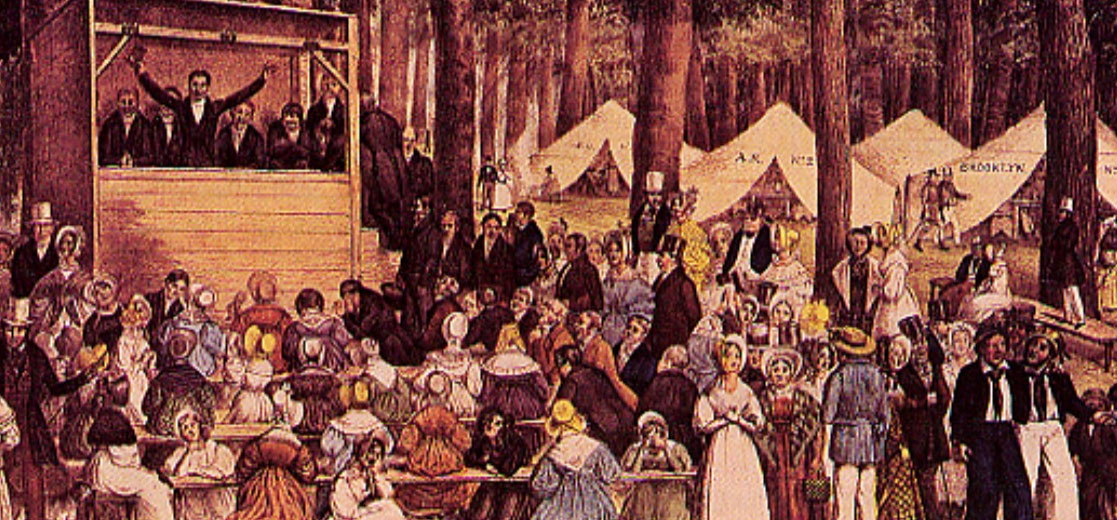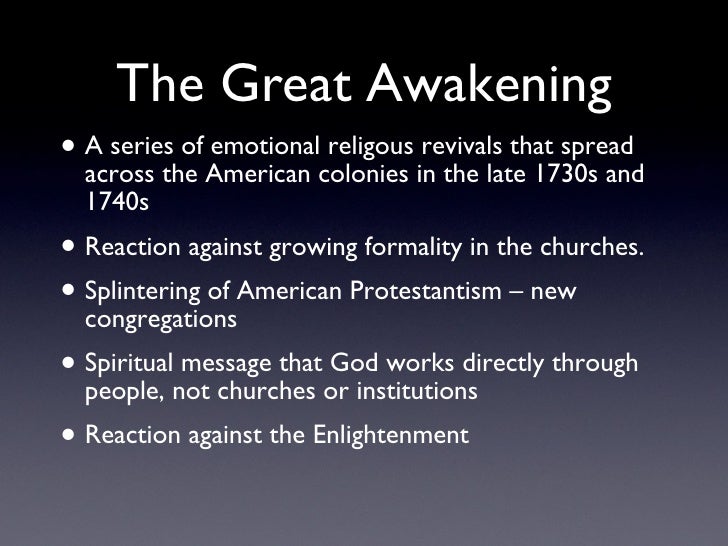- 5 Results Of The Great Awakening Mike Evans
- 5 Results Of The Great Awakening Movie
- 5 Results Of The Great Awakening Season
- 5 Results Of The Great Awakening Cast
The Fourth Great Awakening was a Christian awakening that some scholars – most notably economic historian Robert Fogel – say took place in the United States in the late 1960s and early 1970s, while others look at the era following World War II. The religious revivals known as the Great Awakening and the Second Great Awakening swept through both the North and South periodically from the 1740s through the 1780s. As a result of the revival. First Great Awakening; First Great Awakening. Page 35 of 50 - About 500 essays. Essay about The Esssence of Rebirth and Death in Literature. The quest ends in failure but results in an inner awareness and a first step into manhood. On another level the story consists of a grown man's remembered experience, for the story is told in retrospect.
- Time Period
- 1733 - 1770
- Description
- The First Great Awakening transformed religious life and theology in the colonies during the mid-18th century. Proponents of the revivals worried that religion had become a cold, intellectual assent to truth rather than a vital relationship with the person of Christ.
The Great Awakening was not universally acclaimed, but Congregationalist pastor Jonathan Edwards defended the revivals as God's 'own peculiar and immediate work.' George Whitfield was the most prominent figure of the First Great Awakening. His preaching tours of the colonies drew massive open-air crowds.
Older Protestant denominations faced competition from newer evangelical denominations like Baptists and Methodists. The upstart groups remained a minority in most of the colonies, but their increasing size and influence presaged the Second Great Awakening and the advent of an evangelical religious majority. - Interactive Timeline(s)
- Prominent Religious Events and People in American History
Baptist Religious Events and People in American History
Methodist Religious Events and People in American History
Presbyterian Religious Events and People in American History - Browse Related Timeline Entries
- Prominent Religious Events and People in American History
Baptist Religious Events and People in American History
Methodist Religious Events and People in American History
Presbyterian Religious Events and People in American History - Narrative
- The 'First' Great Awakening was only labeled as such during the 1840s by proponents of the 'Second' Great Awakening, but even in the mid-18th century American Protestants knew that the revivals they observed were transforming religious life and theology. Proponents of the revivals worried that religion had become a cold, intellectual assent to truth rather than a vital relationship with the person of Christ. Furthermore, the traditional Calvinist view of conditional atonement--that God offers salvation only to the elect--began to soften as many revivalist preachers proclaimed that God promised salvation to all who repented of their sins and trusted in Christ.
The Great Awakening was not universally acclaimed. Conservative ministers criticized the revivals for excessive emotional outbursts and doctrinal irregularity. Congregationalist pastor Jonathan Edwards responded to those critics with a widely-distributed essay, A Faithful Narrative of the Surprising Work of God (1737), in which he argued that the revivals were God's 'own peculiar and immediate work.'
While Edwards did much to advance the Awakening through his books and sermons, it was a British evangelist, George Whitfield, who was the most prominent figure of the First Great Awakening. Whitefield conducted regular preaching tours of the colonies from 1738 until his death in 1770. His expressive, extemporaneous preaching style drew in large open-air crowds that routinely numbered as many as 30,000 listeners.
The First Great Awakening had lasting significance for the religious landscape in America. Older Protestant denominations, like Congregationalism and Anglicanism, now faced competition from newer evangelical denominations like Baptists and Methodists. The upstart groups remained a minority in most of the colonies, but their increasing size and influence presaged the Second Great Awakening and the advent of an evangelical religious majority. - Religious Groups
- Timeline Entries for the same religious group Anglicanism Family
Anglicanism Family: Other ARDA Links
Baptist Family: Other ARDA Links
Methodist/Pietist Family: Other ARDA Links
Presbyterian-Reformed Family: Other ARDA Links - Biographies
- Whitefield, George
Edwards, Jonathan
Tennent, Gilbert
Occom, Samson - Movements
- Missionary Movement
Abolitionism
The First Great Awakening
The Third Great Awakening
The Fourth Great Awakening - Photographs
George Whitefield preaching in Philadelphia- Internet Archive- from Life of George Whitefield by A. S. Billingsley
George Whitefield preaching at a horse race- Internet Archive- from Life of George Whitefield by A. S. Billingsley
John Wesley preaching- Hathi Trust- from The Great Revival of the Eighteenth Century by Edwin Paxton Hood- Book/Journal Source(s)
- Ahlstrom, Sydney, 2004. A Religious History of the American People. New Haven: Yale University Press.
- Web Page Contributor
- Paul Matzko
Affliated with: Pennsylvania State University, Ph.D. in History
The major effect of the Awakening was a rebellion against authoritarian religious rule which spilled over into other areas of colonial life. Amidst the growing population of the colonies within the 18th Century and mass public gatherings, charismatic personalities such as Whitefield and Tennent rolled through to deliver their messages. Though a religious movement, the Awakening had repercussions in cultural and political spheres as well. Customs of civility and courtesy, the governing norms of life in the colonies, were set aside in favor of a more quarrelsome age. Practices and mind-sets were changed by the Awakening like never before.
Towards an American Identity
Revivalism in the colonies did not form around a complex theology of religious freedom, but nevertheless the ideas it produced opposed the notion of a single truth or a single church. As preachers visited town after town, sects began to break off larger churches and a multitude of Protestant denominations sprouted. The older groups that dominated the early colonies – the Puritans and the Anglicans – eventually began a drastic downward trend in popularity. Although they accounted for about 40% of American congregations as late as 1760, that number eventually dropped to under 2.5% by 1790.
The social effect of multitudes of new denominations was not, however, a fracturing of communities, but a unifying drive which helped to create a 'national consciousness'.
The effect of Great Awakening unity was an attitude that went against the deferential thinking that consumed English politics and religion. Rather than believing that God's will was necessarily interpreted by the monarch or his bishops, the colonists viewed themselves as more capable of performing the task. The chain of authority no longer ran from God to ruler to people, but from God to people to ruler. The children of revivalism later echoed this radicalism and popular self-righteousness in the American Revolution, when self-assertion turned against the tyrannical ways of George III. It was not to any church that the signers of the Declaration of Independence appealed to, but directly to the 'Supreme Judge of the World'. It was through the revivalism of the first half of the Eighteenth Century that the colonists were finally able to step out from under the protectorate of the established Christian churches and assert religious control over their own nation's destiny.
Government as Contract
Another effect of the Great Awakening on colonial culture was the growth of the notion of state rule as a contract with the people.

Parishioners during the revival gained an understanding of covenants with their churches as contractual schemes; they argued that each believer owed the church their obedience, and the churches in turn owed their congregants the duty to be faithful to the Gospel. Parishioners therefore reserved the right to dissolve the covenant and to sever ties with the church without prior permission. This notion of covenant was a popular one in Puritan society and reflected a common biblical understanding of association. Present in the Mayflower Compact and later forming an ideological basis for breaking from Great Britain, the notion of covenant grew to link religion and politics in the colonies.
The ideals of Puritanical covenant theology were manifested in the 'social compact' of the Declaration of Independence.
Under this theory, implicit in the Declaration, disassociated individuals in the 'state of nature' agree to live and be bound together under consensual government. With the frequency by which believers broke away from larger churches to form splinter groups, the colonists must have been accustomed to separating themselves from larger institutions.

5 Results Of The Great Awakening Mike Evans
Religious Uniformity

5 Results Of The Great Awakening Movie
Perhaps the greatest fuel added to the revolutionary fire that began burning in the latter half of the 18th Century was religious pluralism within the colonies. Unlike England, which after the Glorious Revolution of 1688 had become spiritually stagnant under the Church of England, the colonists adhered to no single denomination. The splits in churches that revivalism had caused prevented uniformity in religion from becoming a reality. While groups such as the Quakers and Anglicans still existed in areas, none could rise to dominate the religious scene and become the primary American religion. So long as the colonists did not become complacent, their religious zeal would continue to burn strong.
Eventually, this religious zeal turned to revolution and sentiments of self-governance. That the religious spirit of the colonists was a necessary component to the drive for independence is confirmed in the sentiments of those who lived during the period of fighting. As British statesman William Knox noted about the American drive for independence, 'Every man being thus allowed to be his own Pope, he becomes disposed to wish to become his own King'.
John Adams gave credit to the Great Awakening as the source of motivation behind the war, and in certain parts of England the revolution was even called the 'Presbyterian Rebellion'.
Shared Goals
5 Results Of The Great Awakening Season

The religious revival of the Great Awakening melded the colonists in a way that would not have been possible otherwise. Eighteenth Century Americans thought of religion as something communitarian – a form of social cooperation – rather than a competitive endeavor of individuals that the world of commerce envisioned. Christians were told to be benevolent and to make self-sacrifices, and many were bound together by way of their shared mass conversions. Thus, they could afford to make sacrifices for their land in times of need.

Parishioners during the revival gained an understanding of covenants with their churches as contractual schemes; they argued that each believer owed the church their obedience, and the churches in turn owed their congregants the duty to be faithful to the Gospel. Parishioners therefore reserved the right to dissolve the covenant and to sever ties with the church without prior permission. This notion of covenant was a popular one in Puritan society and reflected a common biblical understanding of association. Present in the Mayflower Compact and later forming an ideological basis for breaking from Great Britain, the notion of covenant grew to link religion and politics in the colonies.
The ideals of Puritanical covenant theology were manifested in the 'social compact' of the Declaration of Independence.
Under this theory, implicit in the Declaration, disassociated individuals in the 'state of nature' agree to live and be bound together under consensual government. With the frequency by which believers broke away from larger churches to form splinter groups, the colonists must have been accustomed to separating themselves from larger institutions.
5 Results Of The Great Awakening Mike Evans
Religious Uniformity
5 Results Of The Great Awakening Movie
Perhaps the greatest fuel added to the revolutionary fire that began burning in the latter half of the 18th Century was religious pluralism within the colonies. Unlike England, which after the Glorious Revolution of 1688 had become spiritually stagnant under the Church of England, the colonists adhered to no single denomination. The splits in churches that revivalism had caused prevented uniformity in religion from becoming a reality. While groups such as the Quakers and Anglicans still existed in areas, none could rise to dominate the religious scene and become the primary American religion. So long as the colonists did not become complacent, their religious zeal would continue to burn strong.
Eventually, this religious zeal turned to revolution and sentiments of self-governance. That the religious spirit of the colonists was a necessary component to the drive for independence is confirmed in the sentiments of those who lived during the period of fighting. As British statesman William Knox noted about the American drive for independence, 'Every man being thus allowed to be his own Pope, he becomes disposed to wish to become his own King'.
John Adams gave credit to the Great Awakening as the source of motivation behind the war, and in certain parts of England the revolution was even called the 'Presbyterian Rebellion'.
Shared Goals
5 Results Of The Great Awakening Season
The religious revival of the Great Awakening melded the colonists in a way that would not have been possible otherwise. Eighteenth Century Americans thought of religion as something communitarian – a form of social cooperation – rather than a competitive endeavor of individuals that the world of commerce envisioned. Christians were told to be benevolent and to make self-sacrifices, and many were bound together by way of their shared mass conversions. Thus, they could afford to make sacrifices for their land in times of need.
Another shared sentiment of the chiefly Protestant nation was a fear of Catholic domination. While this feeling may have been contributed to by fear of foreign political domination, the revivalist zeal of the colonists no doubt played a part in the anti-hierarchical nature of anti-Catholic attitudes. Through cataclysmic events such as world earthquakes in 1727 and 1755, expectations of the new millennial age increased. The colonists viewed these as divine signs, and so when questions arose about the Antichrist they turned to the Catholics. They considered the pope to be the enemy during the French and Indian War, and celebrations in Boston and in other places, Anti-Pope Day furthered Protestant zeal.
Anti-Catholicism was one of the most prominent traits in the colonies prior to the revolution. This attitude was significant in the New England way of life and existed not only in the churches but also in taverns, newspapers, and schools. Despite political or theological differences between colonists, one common understanding shared by all was an opposition to Roman Catholicism. So when the 'popish' threat subsided somewhat with the passing of the French and Indian War, the colonists searched for a new Antichrist at which they could direct their attention. They found him in George III, who needed to be expelled from the colonies in order to bring forth the new age of righteousness. The religious fervor spawned by the Great Awakening provided the catalyst for political and military action necessary for fulfillment of religious expectations. The crusade against the Catholics provided the necessary focal point over the course of the 18th Century until the new crusade against the British took over.
5 Results Of The Great Awakening Cast
Further Reading
God of Liberty: A Religious History of the American Revolution, by Thomas S. Kidd

